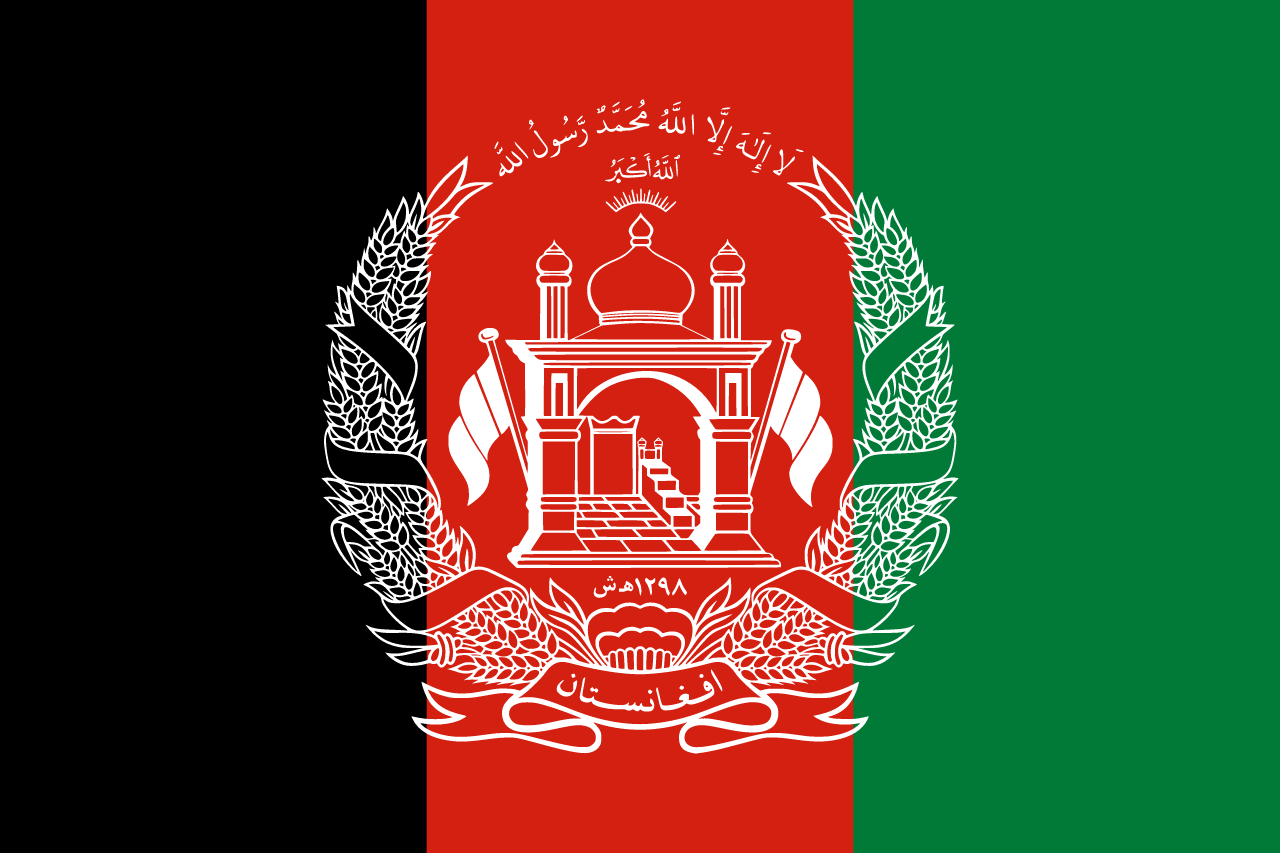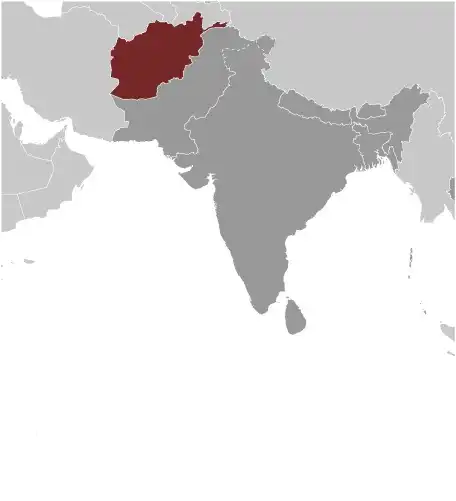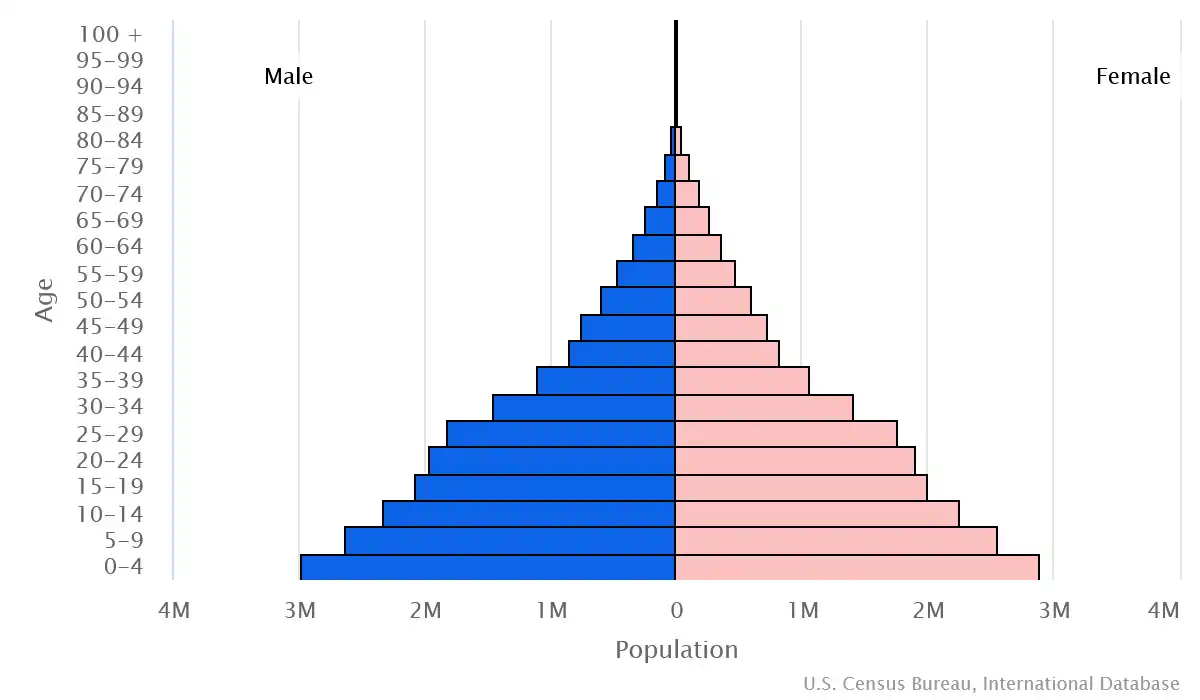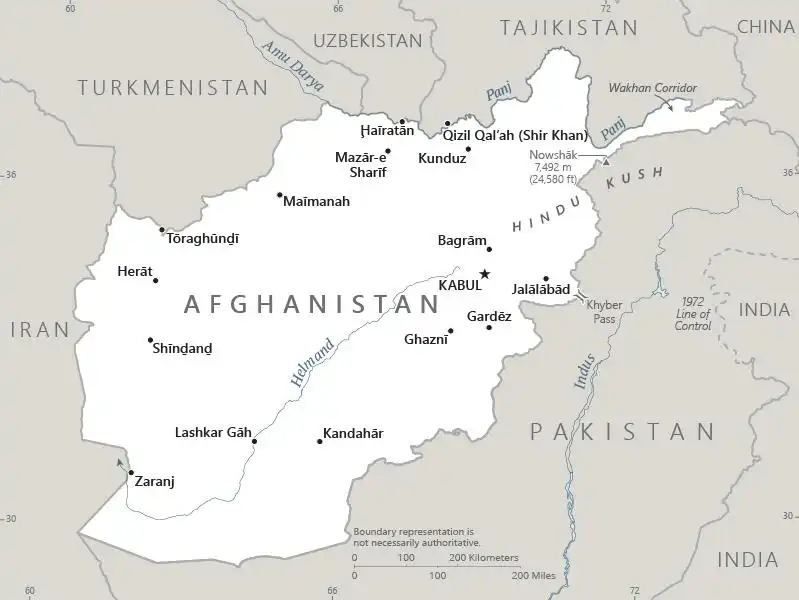
Afghanistan Country Profile
Key Facts of Afghanistan

| Government type: | theocratic; the United States does not recognize the Taliban Government |
| Capital: | Kabul |
| Languages: | Afghan Persian or Dari (official, lingua franca) 77%, Pashto (official) 48%, Uzbeki 11%, English 6%, Turkmani 3%, Urdu 3%, Pashaie 1%, Nuristani 1%, Arabic 1%, Balochi 1%, other <1% (2020 est.) |
Afghanistan Demographic Data
Ethnic Groups in Afghanistan
current, reliable statistical data on ethnicity in Afghanistan are not available; Afghanistan's 2004 Constitution cited Pashtun, Tajik, Hazara, Uzbek, Turkman, Baluch, Pashaie, Nuristani, Aymaq, Arab, Qirghiz, Qizilbash, Gujur, and Brahwui ethnicities; Afghanistan has dozens of other small ethnic groups
Religious Groups in Afghanistan (2009 est.)
Age pyramid of Afghanistan

Afghanistan Economy Statistics
Economic overview of Afghanistan
extremely low-income South Asian economy; import drops, currency depreciation, disappearing central bank reserves, and increasing inflation after Taliban takeover; increasing Chinese trade; hit hard by COVID; ongoing sanctions
Afghanistan Real GDP (purchasing power parity) in Billion $
Afghanistan Real GDP per capita in $
Afghanistan's Exports & Imports in billion $
Top 5 Import Partnerin 2022 (73%) of Afghanistan
Top 5 Import Commodities in 2022 of Afghanistan
- wheat 🌾
- tobacco 🚬
- palm oil 🛢️
- packaged medicine 💊
- rice 🍚
Top 5 Export Partnerin 2022 (92%) of Afghanistan
Top 5 Export Commodities in 2022 of Afghanistan
- coal ⚫
- cotton 🧵
- grapes 🍇
- gum resins 🌲
- nuts 🌰
Geography of Afghanistan
Map of Afghanistan

Land and Water Distrubtion of Afghanistan
Natural Resources of Afghanistan
- natural gas 💨
- petroleum 🛢️
- coal ⚫
- copper 🟧🪙
- chromite 🪨
- talc 🪨
- barites 🪨
- sulfur 🧪
- lead 🪙
- zinc 🔩
- iron ore ⛓️
- salt 🧂
- precious and semiprecious stones 🪨💎
- arable land 🌱
Climate inAfghanistan
arid to semiarid; cold winters and hot summers
History of Afghanistan - a Summary
Ahmad Shah DURRANI unified the Pashtun tribes and founded Afghanistan in 1747. The country served as a buffer between the British and Russian Empires until it won independence from notional British control in 1919. A brief experiment in increased democracy ended in a 1973 coup and a 1978 communist countercoup. The Soviet Union invaded in 1979 to support the tottering Afghan communist regime, touching off a long and destructive war. Internationally supported anti-communist mujahidin rebels forced the USSR to withdraw in 1989. A series of subsequent civil wars saw Kabul finally fall in 1996 to the Taliban, a hardline Pakistani-sponsored movement. Following the 11 September 2001 terrorist attacks, a US and Allied military action toppled the Taliban for sheltering Usama BIN LADIN.
A UN-sponsored Bonn Conference in 2001 established a process for political reconstruction that included the adoption of a new constitution, a presidential election in 2004, and National Assembly elections in 2005. In 2004, Hamid KARZAI became the first democratically elected president of Afghanistan, and he was reelected in 2009. Ashraf Ghani AHMADZAI succeeded him as president in 2014 following a disputed election. The Taliban conducted an insurgency for two decades against the Afghan Government and forces from the United States and other countries. In February 2020, the US and the Taliban signed an agreement that led to the withdrawal of international forces in exchange for commitments on counterterrorism and other assurances. The Taliban took over Afghanistan on 15 August 2021.
The Taliban established an all-male interim leadership structure dominated by Pashtun clerics under the leadership of Haivatrullah AKHUNDZADA. The Taliban issued numerous edicts that constrained women's mobility, ability to study and work, and access to education beyond primary school. To date, no country has recognized the Taliban as the government of Afghanistan.
